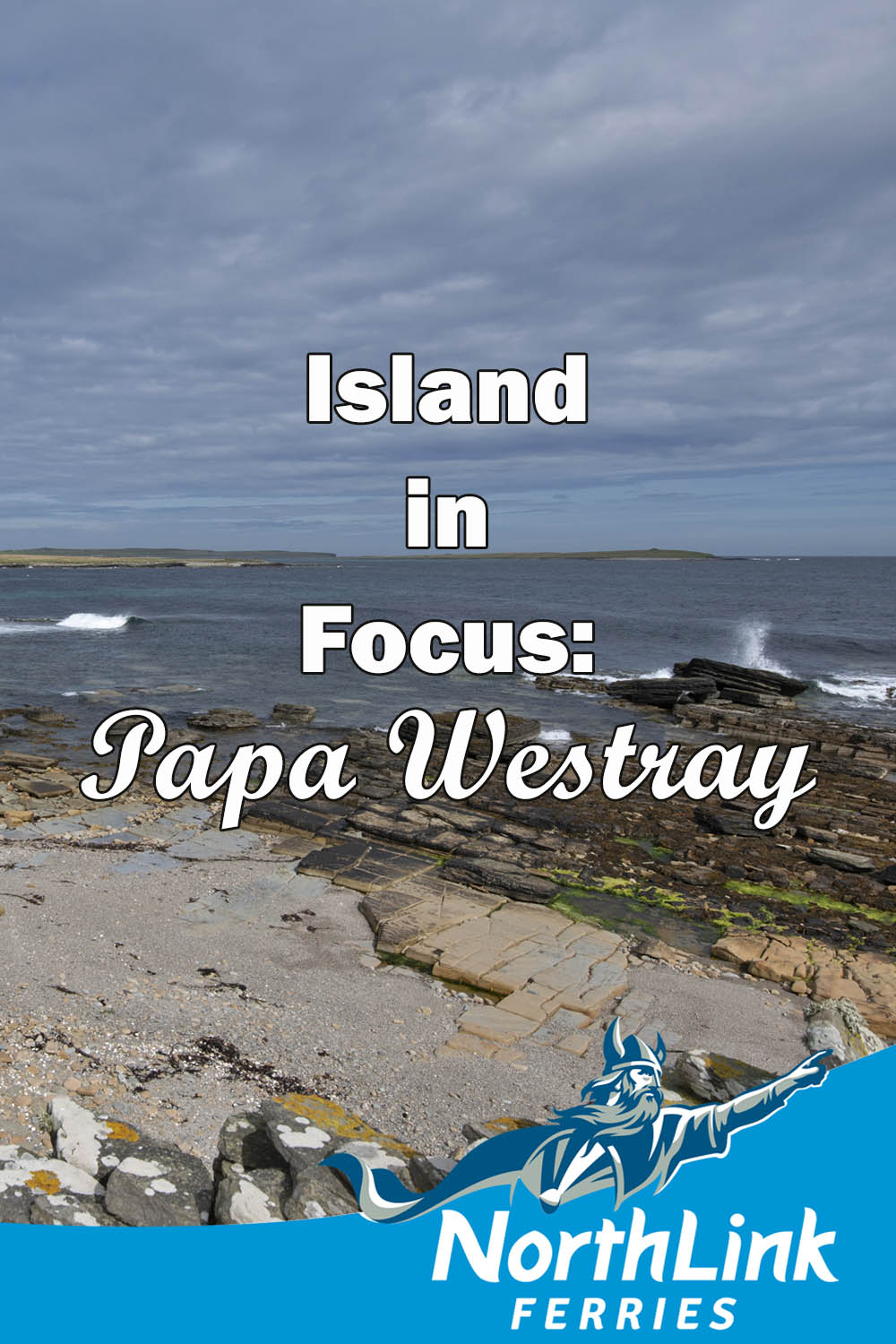Island in Focus: Papa Westray
Papa Westray, or Papay as it is known locally, is a lovely island to spend the day exploring. Those who have seen Saoirse Ronan’s latest film, The Outrun, may recognise Papay as the island and its unique attractions are featured prominently throughout the movie!
On the Holm of Papa Westray, a small isle on the eastern coast of Papay, three Neolithic chambered cairns were discovered which are around 5,000 years old. The southern most cairn is one of the largest and most spectacular burial tombs in all of Orkney.
Located across the Papa Sound from its sister island Westray, Papay is the third smallest inhabited island in Orkney with a population of around 80 people. This peedie island was significant to people in the past too, with Historic Scotland listing nearly sixty archaeological sites here. Early residents of Papay were drawn here due to the island’s highly fertile land which has been farmed for at least 5,000 years.
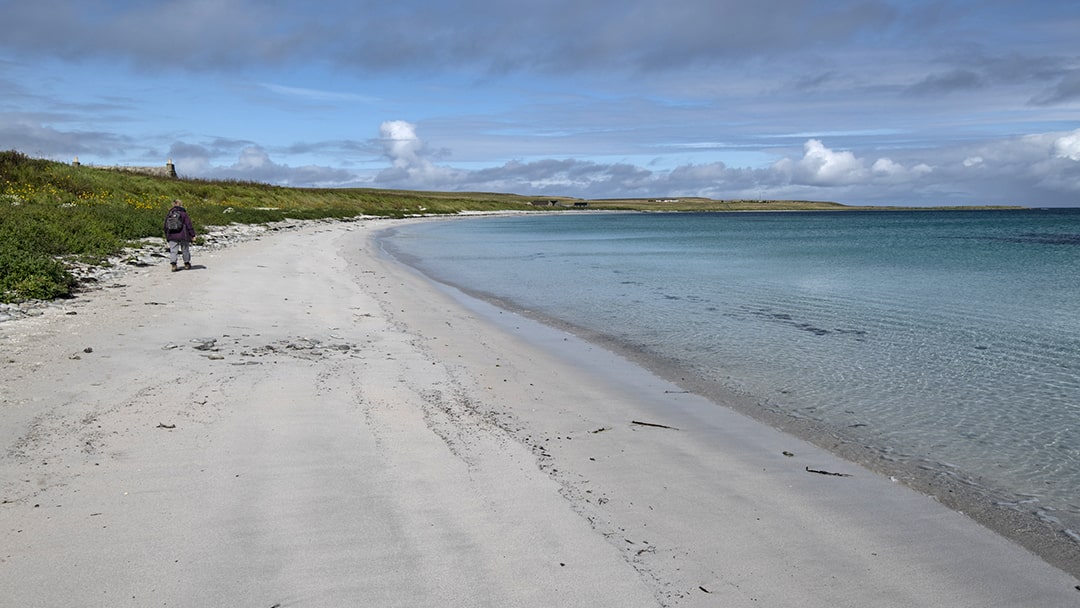
Similar to other Orkney Islands, Papay offers stunning sea views surrounded by craggy cliffs and secluded white sandy beaches such as those at North and South Wick. The island is only four miles long and a mile across at its widest point, meaning the entirety of the island can be walked in one day.
Even getting to Papay is a delight. Visitors can choose to travel to Papay either by air or sea – more on this later! For a truly unique experience, visitors flying to Papay via Westray can enjoy the world’s shortest scheduled flight. The 1.7-mile journey takes less than two minutes, with the quickest crossing being completed in just 53 seconds!
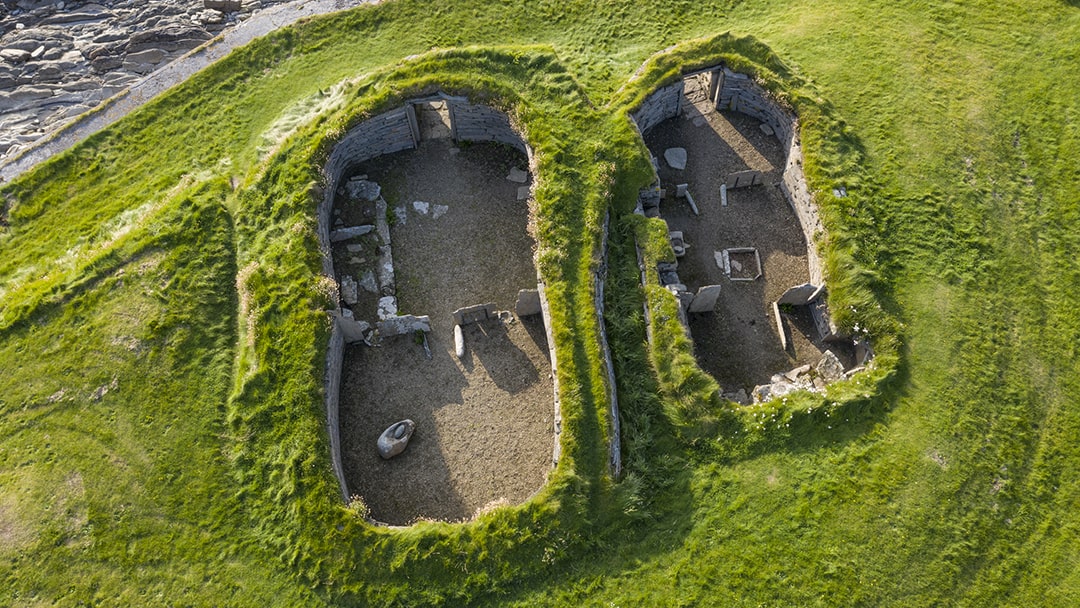
The Knap of Howar
Since its discovery after a storm in the 1920s, Papay boasts the claim of being the home of the oldest standing stone buildings in north-west Europe. The Knap of Howar is the impressive ruins of two ‘houses’ occupied by Neolithic farmers more than 5,000 years ago. Despite the old age of this site, the dwellings are incredibly well preserved since they were completely buried in sand for hundreds, if not thousands, of years. Today, they provide an invaluable glimpse into life in ancient Orkney.
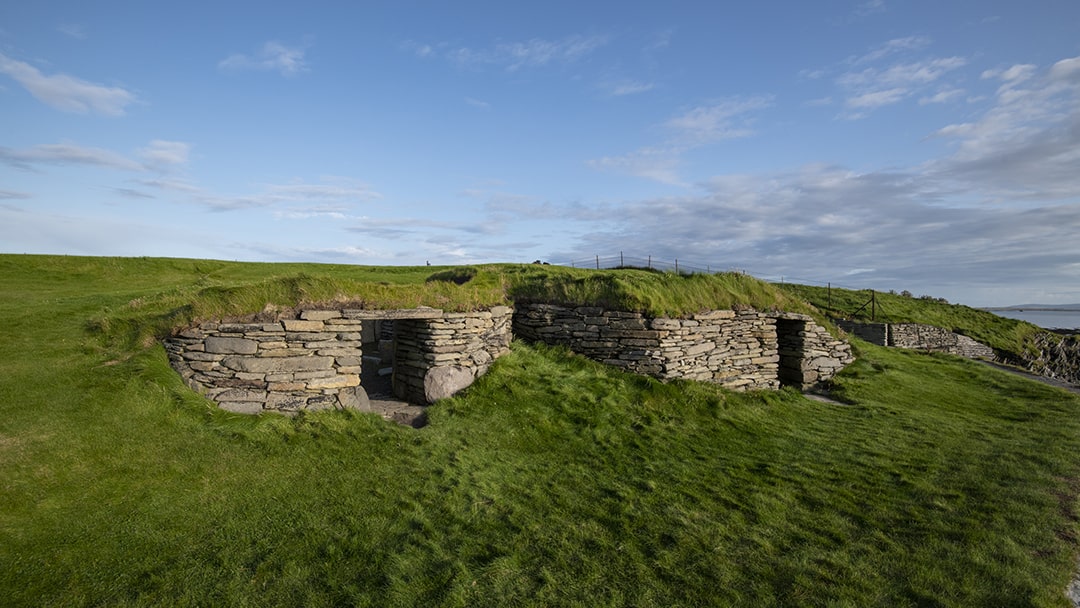
The two buildings sit side-by-side and are connected by a small passageway. It is believed that as ‘house 1’ is slightly larger, it likely served as the main living space, whereas ‘house 2’ was likely used as a workshop or for storage, rather than as a dwelling.
Visitors are free to explore the partly subterranean houses, which have surviving entrances, stone partitions, stone cupboards, a fireplace and walls nearly complete to roof height! The Knap of Howar is open year-round, and its ‘untouched’ nature make it a spectacular place to visit.
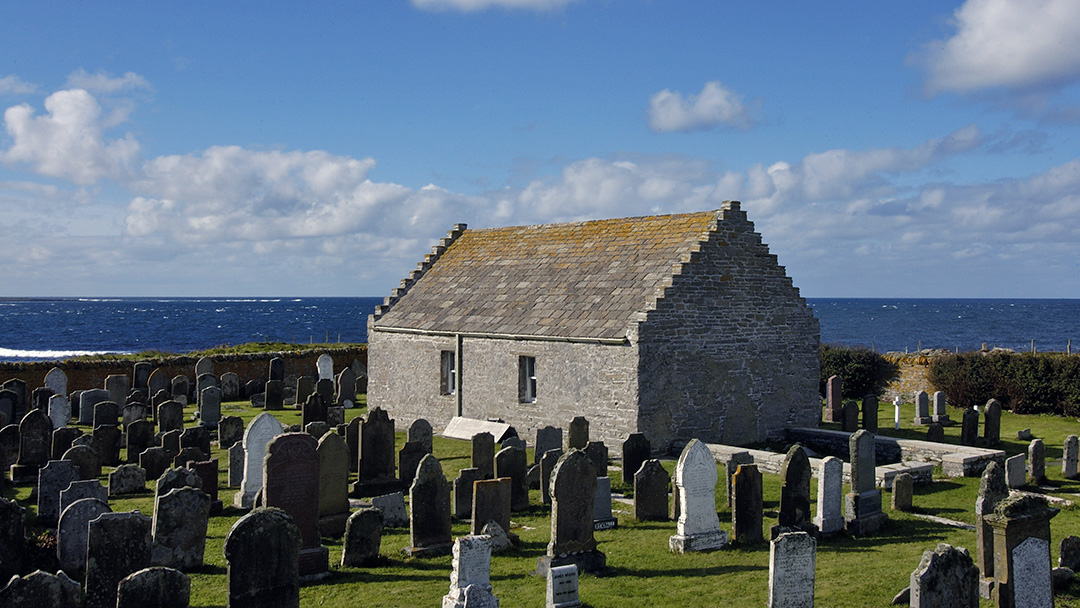
St Boniface Kirk
A short distance from the Knap of Howar lies the St Boniface Kirk, the former parish church of Papay. The church is named after ‘St Boniface’, a famous teacher and missionary who founded several churches and monasteries before his murder in 754 AD.
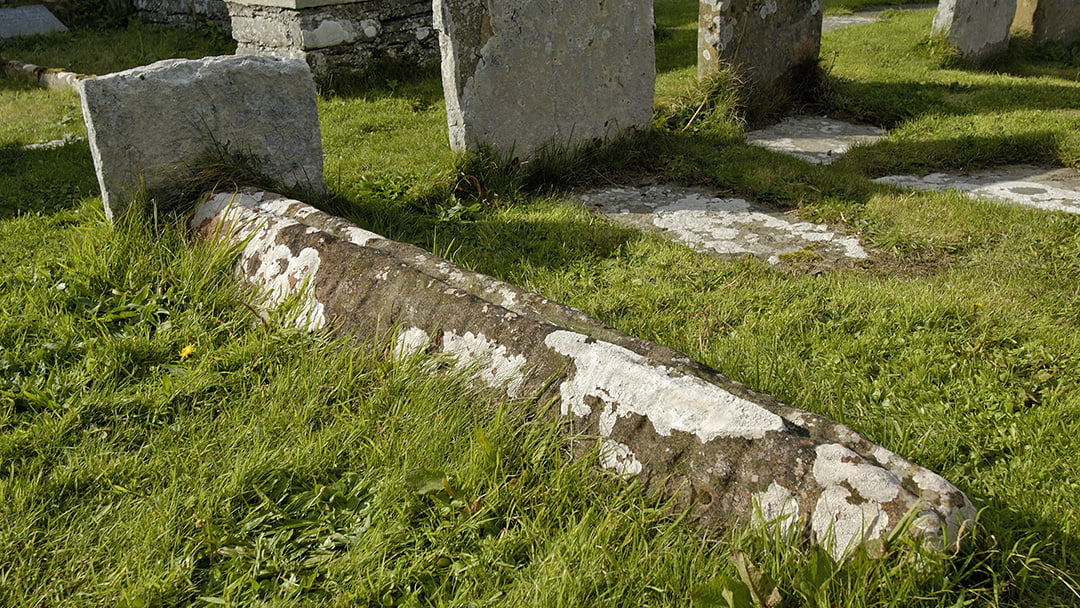
The church and its grounds are one of the oldest Christian sites in northern Scotland, potentially dating from as early as the 8th century. The discovery of two Pictish symbol stones and a carved Norse ‘hogback’ gravestone at the site indicates that this site has long been a place of religious importance.
Aside from St Magnus Cathedral in Kirkwall, St Boniface is the only other church in Orkney to survive the Reformation and that continues to be used today. The existing kirk dates to the 12th century and wasn’t abandoned until the late 1920s. After being fully restored in 1993, the St Boniface Kirk still occasionally hosts services and performances today.
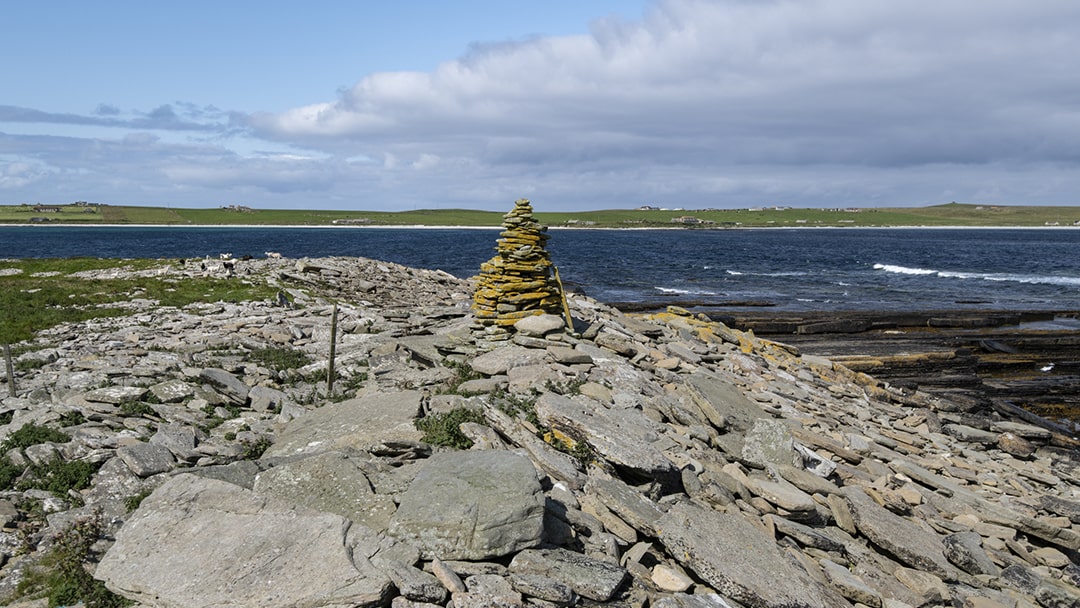
Holm of Papa Westray
Looking out from the eastern coastline of Papay, you will see a very small island peeking out from the sea. This is the Holm of Papa Westray, locally known as Papay Holm, which is only accessible by boat from the old pier on Papay.
At first glance, this low-lying isle appears barren and unassuming. However, three Neolithic chambered cairns were discovered here almost 200 years ago and are believed to be around 5,000 years old.
There are no burial tombs on Papay, suggesting that in Neolithic times, Papay Holm was not an island, but rather a promontory attached to Papay where residents – such as those who lived at the Knap of Howar – buried their dead. Still, it is quite extraordinary to find one of Orkney’s largest and most spectacular tombs in such a remote location.
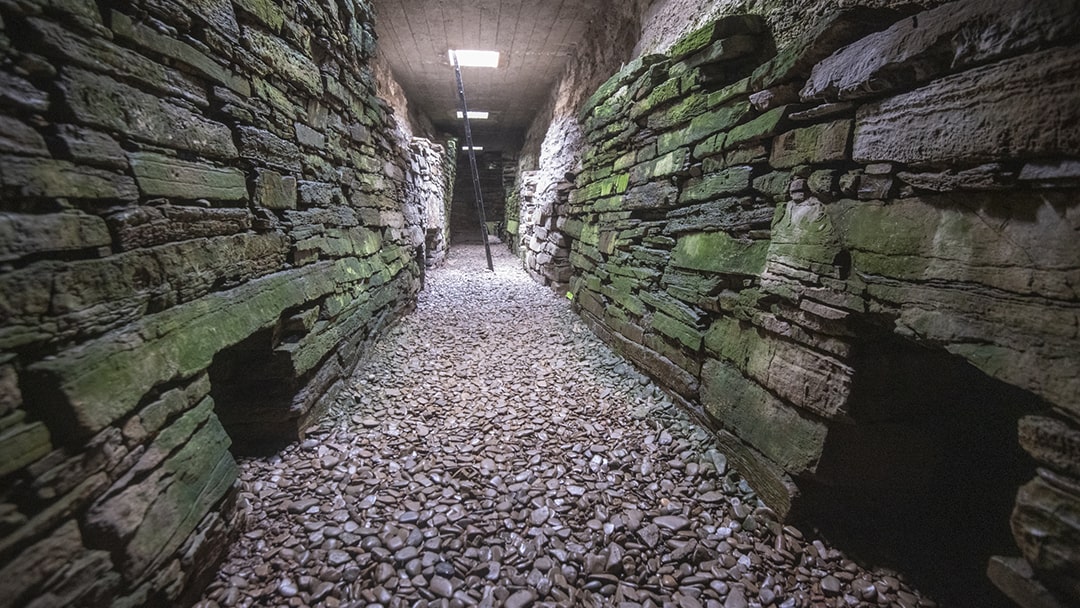
The southernmost cairn is the largest of the three tombs and is unusual in its size and form. It has a large 20m-long central chamber with twelve cells that open off from it, two of which are double cells. In Neolithic times, entry to the chamber was by a long, low, and narrow passageway; today, visitors descend into the tomb by a ladder through a hatch in the restored ceiling of the cairn.
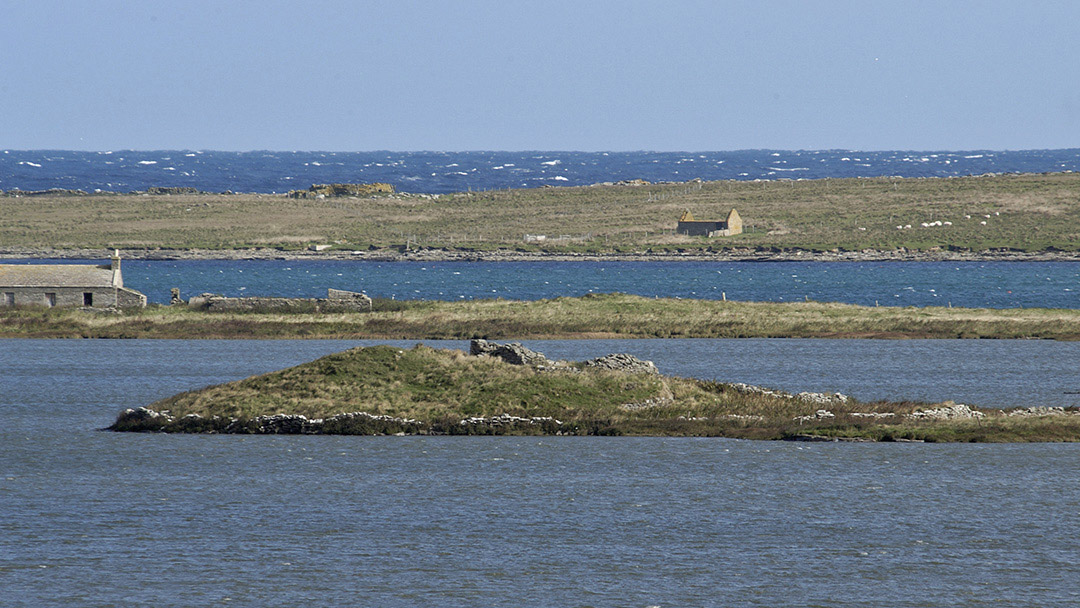
St Tredwell’s Chapel and Loch
St Tredwell’s loch is a large body of water on the southern end of Papay that has an intriguing history and lore attached to it. It is also home to the ruins of a small 12th century chapel which sits upon a conical mound on a small peninsula extending from the loch’s shore. Beneath the mound is an Iron Age fortification, but the visible rectangular walls are part of the chapel ruins.
Interestingly, throughout history this loch has been a pilgrimage centre in Orkney. St. Tredwell (or Triduana) was a ‘holy virgin’ who travelled with St. Boniface on a mission to visit King Nechtan of the Picts in 710 AD. According to legend, Nechtan fell in love with Triduana and admired her eyes. In response, she gouged her eyes out and sent them to him impaled on a stick. She was possibly laid to rest here, and the waters soon became associated with curing diseases of the eyes, attracting pilgrims from Orkney and northern Scotland who sought its miraculous cure.
One of Scotland’s best poets, George Mackay Brown, was born in Stromness, Orkney and he lived and worked in the waterfront town for nearly all of his 74 years. He wrote of this legend in one of his poems:
Saint Tredwell, Papay
Islanders with blurred vision;
Those
Who had never seen sun or stars;
Fishermen
Who, with long level horizon-scanning
Had trouble knotting a creel;
Girls
Who were comely enough
But that – among country mockeries –
Their eyes looked two ways;
Falconers whose hawks
Had sunk a claw in their faces;
Old men
Who now had a boy to lead them this way and that –
All came at last
To Tredwell’s kirk in Papay.
Her eyes’ beauty
Had driven King Nechtan mad.
To him she sent
Her two eyes skewered on a long thorn
And withdrawn to contemplation:
The inner vision.
Then, whoever had bruised or blinded eye
Walked round the shore of Tredwell loch
Seven times, sunward,
And, for the gift of sight
Left a small coin on the chapel step.
George Mackay Brown
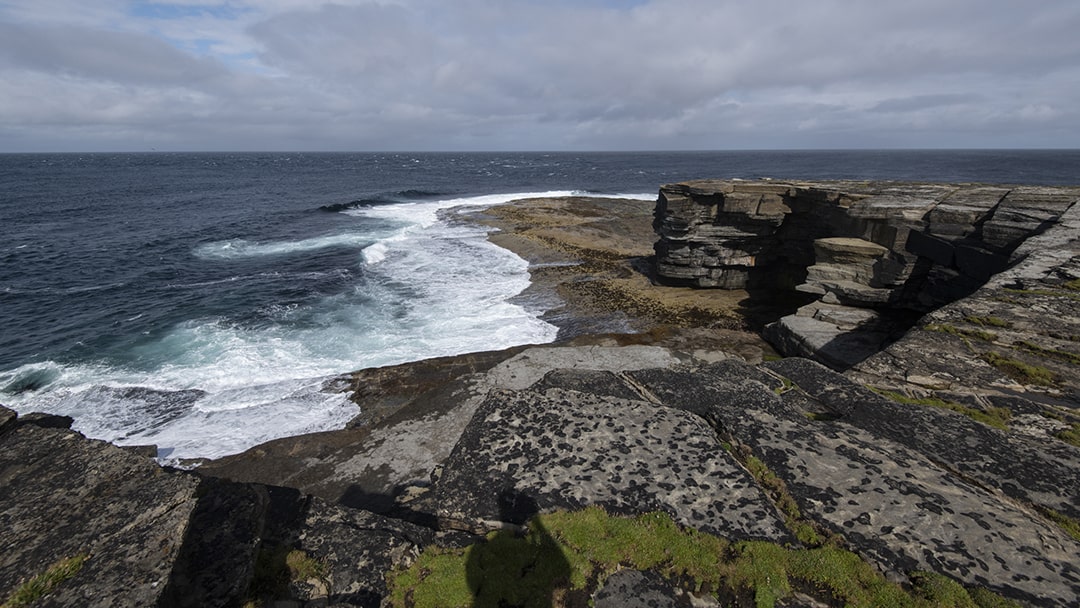
North Hill Nature Reserve
North Hill is the highest point of Papay reaching 160-feet-tall and is the location of an RSPB nature reserve. For those who enjoy birdwatching, North Hill is a great place to visit as it is a significant nesting area for seabirds including guillemots, fulmars, kittiwakes and even puffins can be spotted here during summer. The low-lying cliffs also play host to nationally important numbers of breeding Arctic terns and skuas.
If visiting between May and July, look out for Scottish Primrose – a beautiful, rare purple flower found in only a few locations in Orkney and northern Scotland.
Fascinating fact: During World War II, particularly in the lead up to the 1944 D-Day landings in Normandy, the Home Fleet anchored at Scapa Flow practiced their sea-to-land bombardment using North Hill as a target, resulting in the hill being pitted from all the shell craters!
How do you get to Papa Westray?
After reaching Orkney from the Scottish Mainland with NorthLink Ferries, to get to Papa Westray you’ll need to take another ferry or a plane from the Orkney Mainland.
If arriving via ferry, there are two weekly sailings for passengers and vehicles from Kirkwall and the crossing takes around 2 hours. Alternatively, there are frequent passenger only sailings from Westray to Papa Westray which take less than 30 minutes. It is recommended to book ferry travel in advance, particularly during the busy summer months.
The ferries to Papa Westray are operated by Orkney Ferries.
If arriving via plane, there are regular flights from Kirkwall to Papa Westray, as well as the 90-second flight between Westray and Papa Westray. Please note there are only 10 seats onboard this shorter flight and the service is in high demand during summer, so advanced booking is essential.
The flights to Papa Westray are operated by Loganair.
Poem reproduced by permission of the Estate of George Mackay Brown.
 By Amy Leith
By Amy LeithBorn and raised in Aberdeen with an admiration for Orkney and Shetland, loves to travel and visit new places, enjoys cooking, always listening to music, spends a little too much time on TikTok.
Pin it!